Home » Diet & Food »
The 7 Healthiest Nuts (You Know, For When You're Really Bored Of Almonds)
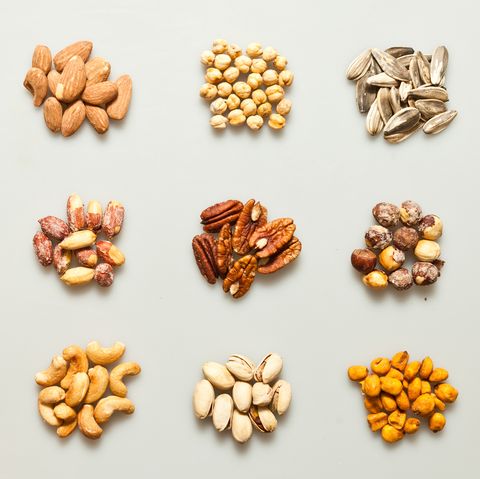
Almonds are totally getting all the love lately. You’ve probably got little packets of almond butter sitting at the bottom of all your purses (thanks, Justin’s) and can we take a minute to talk about the genius that is Skinny Dipped Pumpkin Spice Almonds? Dear lord, so good.
But guess what: Lots of other nuts are good for you, too. Might as well mix it up, because all nuts are high in protein, fiber, healthy fats, and magnesium to keep you satiated and build stronger bones and muscles, says Maggie Michalczyk, R.D.
These seven other healthy nuts deserve a spot in your snack rotation, too.
1. Brazil Nuts

Getty Images4kodiak
“These nuts pack in plenty of selenium, a mineral involved in thyroid hormone production and that’s crucial in antioxidant function for processes that protect us against cancer,” says Kelly R. Jones R.D. “It’s also great for hair skin and nail health. One study even showed an immediate impact on blood cholesterol improvements within nine hours of ingestion,” she says.
Yet take note—these are big-ass nuts. You only need to eat two or three a day to get the benefits, so don’t go ahead and eat 12 of them like you would almonds.
Per 1-ounce serving: 187 calories, 19 g fat (4.5 g sat fat), 1 mg sodium, 3 g carbohydrates, 0 g of sugar, 2 g fiber, 4 g protein.
2. Cashews
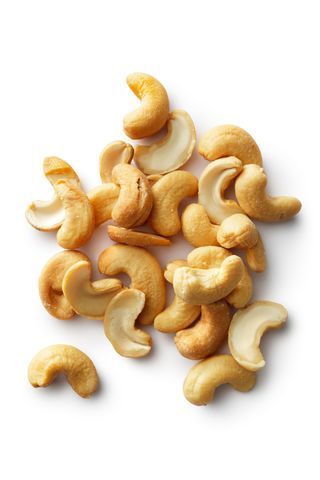
Getty ImagesFloortje
“Cashews have more iron than any other nut, so with this being the most common nutrient deficiency, more people should include them in their diets,” says Jones. The creamy texture of cashews also make it a great dairy replacement—cashews can make a great substitute for Parmesan when ground, she says.
Per 1-ounce serving: 160 calories, 12 g fat (2 g sat fat), 9 g carbohydrates, 1 g of sugar, 2 g fiber, 5 g protein.
3. Macadamia Nuts

Getty Imageselbs
“Macadamia nuts are high in thiamin—a.k.a. vitamin B1, manganese, and copper and contain healthy monounsaturated fat, the kind found in avocados and olive oil too,” says Michalczyk. Yet, they’re pretty underrated and generally associated with sweets.
“Perhaps best known for their role in white chocolate macadamia nut cookies, they are also great in things like salad or a more nutritious coating for chicken or fish,” she says. A bit healthier, right?
Per 1-ounce serving: 204 calories, 21 g fat (0 g sat fat), 1 mg sodium, 3.9 g carbohydrates, 1 g of sugar, 2 g fiber, 2.4 g protein.
4. Peanuts
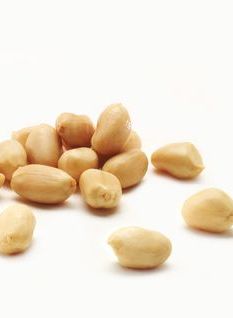
Getty Imagesbaratibor
“Peanuts, actually not a nut at all but rather part of the legume family, are a good source of protein and many different vitamins and minerals, such as magnesium and phosphorus,” says Michalczyk. (Everyone thinks of them as a nut though, tbh.)
Yes, you can reap these benefits by eating peanut butter, but try not to go at it with a spoon. “Keep in mind it’s high in calories, so stick to the serving size of two tablespoons,” she says.
Per 1-ounce serving: 161 calories, 0.4 g fat (0 g sat fat), 5 mg sodium, 4.5 g carbohydrates, 1 g of sugar, 2 g fiber, 7 g protein.
5. Pistachios
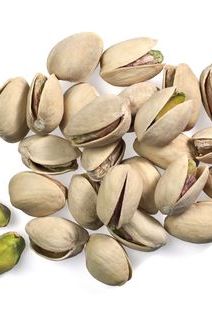
Getty Imagesmagnetcreative
“These little green gems make a great snack or salad topper because of their high nutrient and antioxidant content,” Michalczyk says. They’re one of the nuts with the highest concentration of lutein and zeaxanthin, too, both of which promote eye health.
“Even better is the fact that behavioral research has shown that it takes you longer to de-shell shelled pistachios, you are more likely to eat less,” she adds.
Per 1-ounce serving: 159 calories, 12.8 g fat ( 0 g sat fat), 0 g sodium, 7.7 g carbohydrates, 2.1g sugar, 3 g fiber, 5.7 g protein.
6. Walnuts
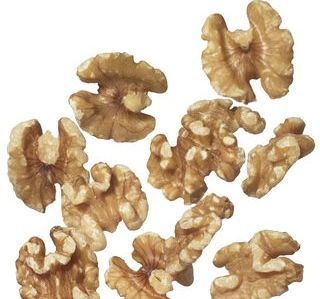
Getty ImagesJack Andersen
“Walnuts are a super plant source of omega-3 fatty acids, [which] are essential to the diet and help to reduce the risk of heart disease,” says Michalczyk. They’re a little high in calories and fat compared to other nuts, but it’s the healthy fat that your body needs, she says, which will help you stay fuller for longer.
Per 1-ounce serving: 220 calories, 22 g fat (0 g sat fat), 0 mg sodium, 5 g carbohydrates, 1 g of sugar, 2 g fiber, 5 g protein.
7. Pecans
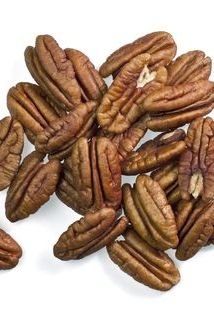
Getty Imagesmagnetcreative
“Pecans are one of the best known dietary sources of vitamin E. They are also a great source of thiamin, a B vitamin that plays a key role in energy metabolism,” says Michalczyk. You can use them in yogurt, oatmeal, soups, veggie sides, and more. “Fall is the perfect time to sprinkle them on just about everything,” she says.
Per 1-ounce serving: 196 calories, 20 g fat (0 g sat fat), 0 mg sodium, 3 g carbohydrates, 1 g of sugar, 2 g fiber, 2.6 g protein.
Source: Read Full Article



